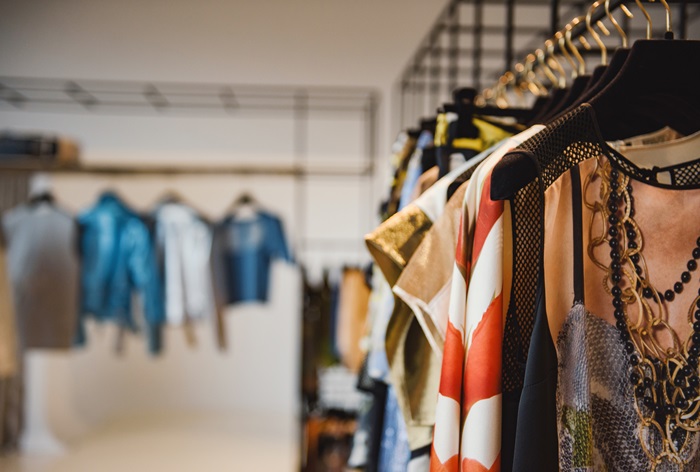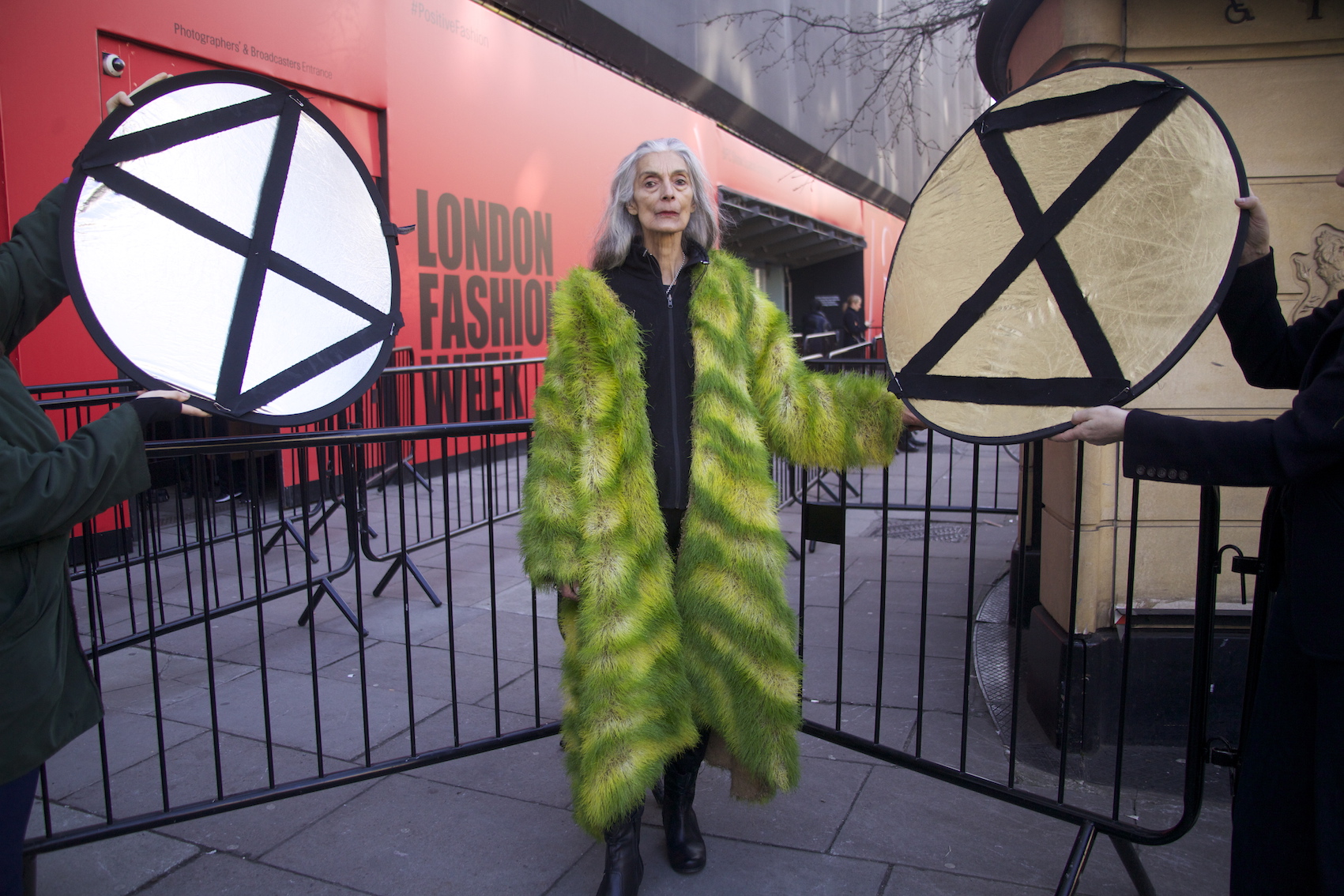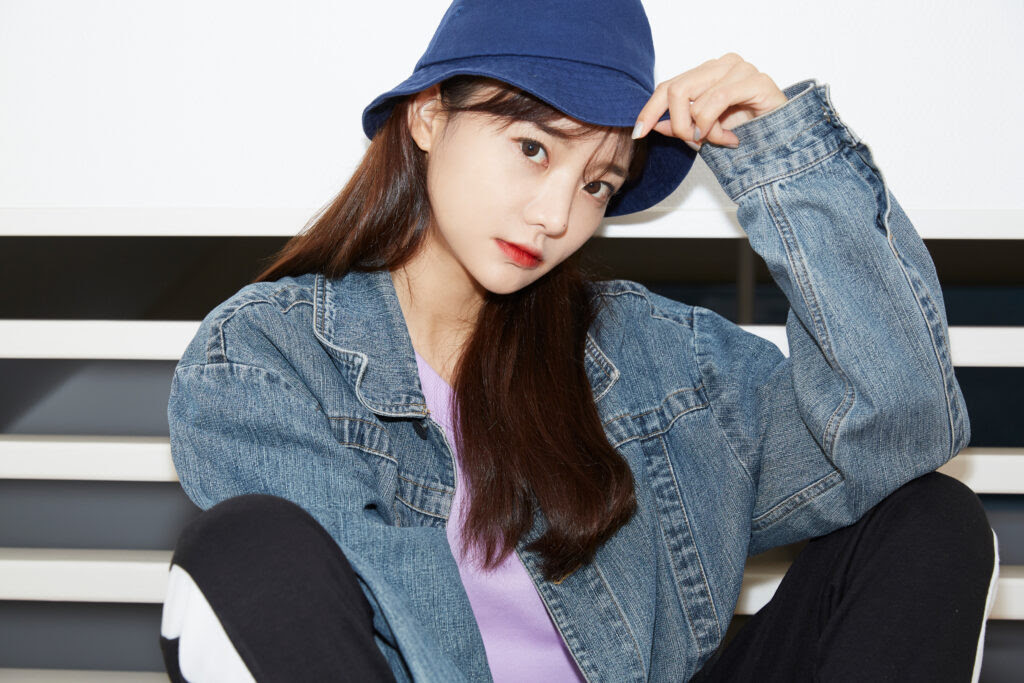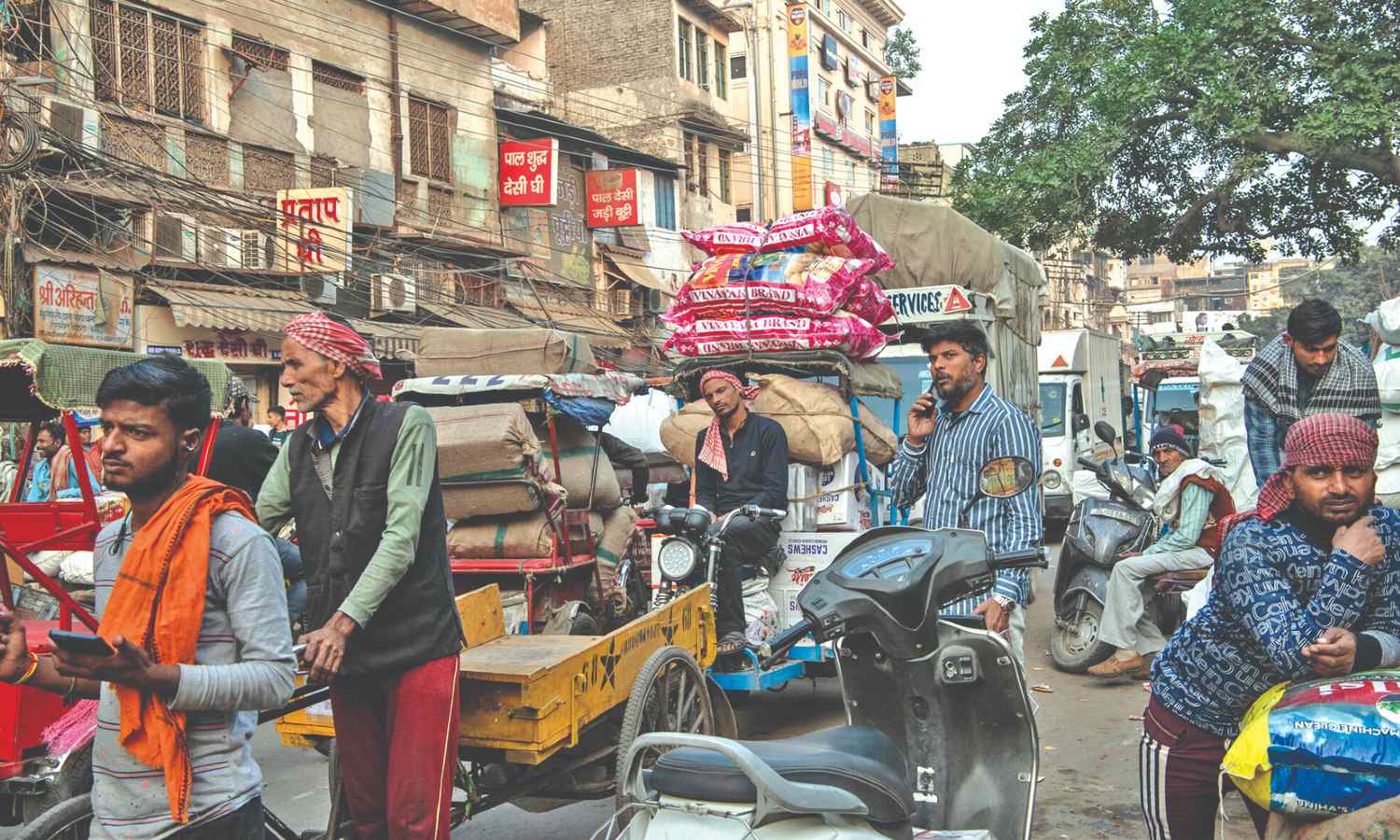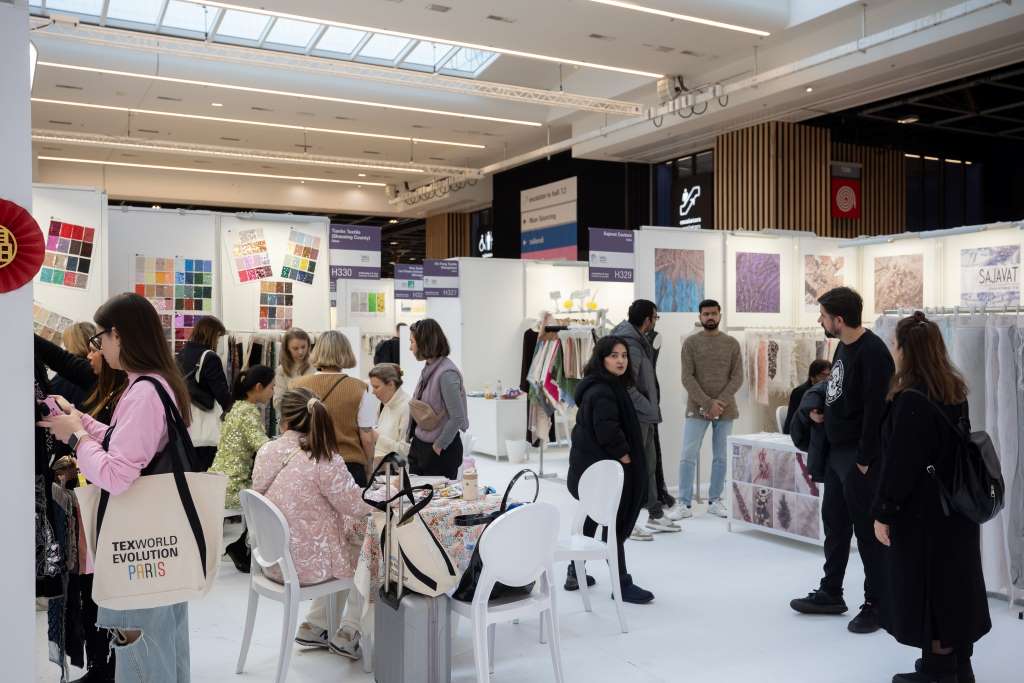FW
The textile sector in India contributes more than five per cent to India’s GDP and 14 per cent to overall index of industrial production. The sector is expanding even though it has been facing numerous challenges. The sector comprises small-scale, medium-scale, large-scale, non-integrated, spinning, weaving, finishing, and apparel-making firms and enterprises.
The textile and apparel industry is broadly divided into three segments. One, yarn and fiber (including natural and manmade), mainly made up of cotton and jute; second, processed fabrics (including woolen textiles, silk textiles, jute textiles, cotton textiles and technical textiles); and third readymade garments and apparel.
The unorganized sector includes handlooms, power looms, hosiery, knitting, readymade garments, khadi, carpets and handicraft manufacturing units. The organized mill sector comprises spinning mills and composite mills where spinning, weaving, and processing activities happen.
Exports of Indian textile and apparel products have been growing with the EU and the US as major export destinations. The basic strength of the industry in India is its strong production base of a wide range of natural fibers like cotton, jute, silk and wool to synthetic or manmade fibers like polyester, viscose, nylon and acrylic.
Overall production of manmade filament yarn has declined over the last few years, though production of viscose filament yarn and nylon filament yarn has increased correspondingly.
German clothing retailer C&A is examining partnerships and other types of outside investment as it develops a turnaround plan focusing on China and other emerging markets. Swiss-based COFRA Holding issued a statement in response to a report in Spiegel Online that C&A, which was founded in the 19th century and remains in family ownership, was close to being sold to a group of unnamed Chinese investors.
The company is committed to a successful, future-proof C&A business and as such at C&A it has embarked on a transformation and growth programme, says a COFRA Holding representative. The ongoing transformation of C&A includes an investigation of ways to accelerate in high growth priority areas. These included “China, emerging markets that could potentially include partnerships and other types of additional external investment.
C&A was founded as a confectionery business in 1841 by brothers Clemens and August Brenninkmeyer, and today runs more than 1,500 stores, employs 35,000 people and operates in 18 European countries. The business, controlled via COFRA by more than 1,000 descendants of the Brenninkmeyers, has struggled of late to compete with fast-fashion brands and online retailers. Caparros, formerly of German supermarket chain REWE, was hired as chief executive of C&A in mid-2017, replacing Philippe Brenninkmeijer in a break from the tradition of a family member running the company.
India may have a uniform unit of weight for cotton trade. One recommendation is buying should be in kilos or tons only since this would make pricing accurate. The step is a move towards more uniformity and transparency in the cotton trade. Different units of weight cause ambiguity and confusion for the exporters, who have to plan their purchases. Export orders have a plus or minus five per cent variation in the weight and one isn’t sure exactly how much cotton will be there in a bale — 160 kg or 165 kg.
So far, cotton has been traded in different weight units at different parts of the value chain in different growing regions in the country. Gujarat, the largest cotton producer, uses bales for cotton procurement from markets while kapas (raw, unginned cotton) is weighed in quintals. Ginned cotton is quoted in candies.
While farmers get the price based on quintal weight, the procurement at the market or mandis is quoted in bales. Nowhere in the world is cotton procurement quoted in bales. While the weight in India has been fixed at 170 kg for a bale, many states still have bales with 160 to 165 kg. Ginned cotton is quoted in candy, while exports take place in terms of tons.
Bangladesh wants to have stronger trade links with Hong Kong. Leveraging on Hong Kong’s intrinsic geographic and economic advantages, Bangladeshi companies can expand businesses into the Chinese mainland and the world using this value-adding gateway. Bangladesh hopes to trade with Hong Kong in readymade garments, leather, textiles, fabrics, food, sea food, frozen foods, jute and ceramic products.
The total trade value between Bangladesh and Hong Kong amounted to nearly $1.7 billion in 2016. Hong Kong sees Bangladesh as a market with great potential for uncovering bilateral opportunities. It sees Bangladesh as a manufacturing powerhouse in South Asia with a rapidly expanding economy, and an important partner on the Bangladesh-China-India-Myanmar economic corridor under the Chinese mainland’s belt and road initiative.
Trade fairs that offer one-stop marketing and sourcing platforms present prime opportunities for Bangladeshi traders to gather the latest market intelligence and form partnerships and develop their business in Hong Kong. Hong Kong is presenting itself as a sourcing and distribution hub in Asia.
Many garment, leather and footwear factories in China want to relocate production units to Bangladesh to utilise duty-free entry benefits allowed to exports. These companies want to manufacture in Bangladesh and re-export the finished products to the world through Hong Kong.
"Every year, 100 million tons of new textiles come into the market and the textile industry has one of the highest turnovers in the world. It has long been understood that textile production has major environmental impact. But it has been difficult for textile companies to determine what choices they can make to reduce the environmental load, due to the wide variation in production processes."

Every year, 100 million tons of new textiles come into the market and the textile industry has one of the highest turnovers in the world. It has long been understood that textile production has major environmental impact. But it has been difficult for textile companies to determine what choices they can make to reduce the environmental load, due to the wide variation in production processes.
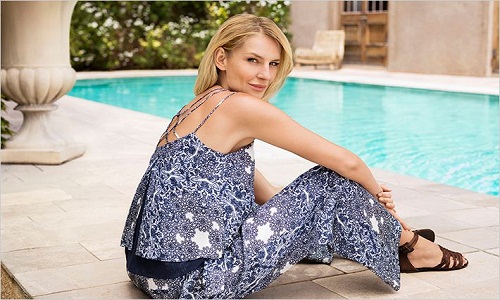
Researcher Sandra Roos has taken an overall approach to the clothing life cycle with her Swedish research reveals interesting facts doctoral thesis at Chalmers University of Technology in Sweden and the research institute Swerea, within the research program Mistra Future Fashion. Over the course of her five-year project, she studied 30 different sub-processes in textile production. She assessed toxicity of the chemicals used in the processes. The sub-processes studied extend from techniques as different as entirely synthetic textile fibres made of plastic, to cotton production – where farmers cultivate the soil, plant and harvest the cotton, before ginning and preparing it.
Collaborating for sustainability
Mistra Future Fashion is a collaborative project between the fashion industry and researchers in Sweden. Their next step will be to transform the results of the thesis to a practical tool that clothing manufacturers can use to improve the environmental performance of their processes and products. The tool is expected to be ready sometime in 2017. This is an important step, since the majority of the environmental load in the clothing life cycle is created in the production phase.
Roos's research shows conventional cotton growing, where large quantities of insecticides are spread directly on land, stands out as a particularly heavy burden on the environment. At present, most environmental indices are based on the type of textile fibre used: wool, nylon, polyester or cotton. But that is not where the major environmental impact is found, which is actually in the post-fibre processing stages: spinning, weaving, knitting and, above all, in the dyeing – the wet processing. All chemicals used in these processes actually make it hazardous as cotton growing.
Usability quotient
To be eco-friendly clothes need to be used until they are worn out. That is more important than all other aspects, such as how and where the clothes were manufactured and the materials they are made of. But in industrialised countries, only a tiny percentage of garments are worn 100 to 200 times, which is usually the potential lifetime. In Sweden, for example, consumers buy an average of 50 new garments per person in a year. It is difficult for consumers to get information about the most important aspects – those related to processing of the textile materials.
Textiles are made of cellulose from trees and plants are an important track in research and development to close the loop so that the textile industry becomes sustainable. Viscose, modal and lyocell/Tencel are examples of such textiles that are already available and whose environmental performance is often good.
Eco-labelled clothing
Buying eco-labelled clothes makes a difference. There are several cotton labels, including BCI (Better Cotton Initiative) and GOTS. However, eco-cotton labels only indicate that the cotton was organically grown – they say nothing about the rest of the production process (dyeing and treatment). On-line shopping is generally a very good alternative from the environmental perspective. But only if you do not end up buying clothes you like less – and hence wear less – or returning lots of garments. E-retailers do not always put returned garments back in stock to be sold again.
Australia’s wool exports are forecast to rise by four per cent in 2017–18. Wool demand will continue to grow in the European Union and the US, the major international markets for imported woolen clothing. Demand for luxury woolen textiles is rising in major international markets especially China.
Australian wool prices are forecast to rise eight per cent in 2016-7. Prices are expected to peak next year before easing in real terms as wool production increases. And, by the end of 2021-22, prices are expected to still be relatively high, at around ten per cent above the ten-year average in real terms.
The upward trend in prices reflects the constrained supply of apparel wool—given lower flock numbers—and firm demand, particularly for fine wool. The continuing growth in wool demand has led to an increase in the price of wool in Australian dollars since 2014.
By the end of 2016-17, shorn wool production is forecast to be five per cent higher than last year, reflecting flock rebuilding across the sector supported by good pasture growth on the back of the 2016 rainfall. And the national sheep flock is forecast to increase to 73.6 million heads in 2016-17 and to continue increasing to around 83 million heads by 2021-22.
Corporate Human Rights Benchmark has ranked apparel companies in the world on human rights issues. Marks & Spencer and Adidas figure high followed close behind by H&M, Gap, and Nike. At the bottom of the pile are Kohl's, Macy's, Walmart, Under Armor and Fast Retailing.
Businesses were assessed on human rights policies, governance, processes, practices and transparency as well as how they respond to serious allegations. CHRB aims to make corporate human rights performance easier to see and simpler to understand for a wide range of audiences - inside and outside companies.
Leading companies are those that have recognised the moral imperative, business case, and commercial viability of taking action on human rights. There are a large proportion of companies that are performing poorly, with an average score per measurement theme of between 20 and 29 per cent. Thirteen out of the 30 apparel companies assessed fall in this category. These low performing companies spell dangers of human rights abuse of workers.
In the CHRB's apparel industry criteria, the highest scoring area was transparency, followed by policy, with companies scoring lowest in remedies and grievance mechanisms. The main finding is that many companies are yet to implement the UN guiding principles and other internationally recognised human rights and industry standards.
Bangladesh’s garment exports to non-traditional markets increased 3.4 per cent year-on-year in July-December of the current fiscal year. For Bangladesh, non-traditional markets are those other than the European Union, US and Canada. Of the non-traditional markets, Bangladesh’s garment exports to Japan registered the highest growth in the July-December period. Japan is the biggest export destination for Bangladesh in Asia. Apparel exports to Japan rose 6.55 per cent.
Japan wants to reduce its dependence on China. Right now more than 80 per cent of Japan’s apparel imports are from China. The country is looking at Bangladesh as an alternative. Other promising non-traditional markets for Bangladeshi garments are Russia, Australia and China.
Bangladesh began giving cash incentives on garment exports to emerging markets to offset the fallout from the global financial meltdown in 2007. These cash incentives on export to non-traditional markets drove growth over the years.
Subsequently, exports to India, China, Russia, Japan, South Africa, Turkey, Brazil, Chile, Mexico, South Korea, Malaysia, Australia and New Zealand started to rise. The cash incentive for apparel exporters was five per cent in 2009-10, four per cent in 2010-11 and two per cent in 2011-12. They still receive a two per cent incentive for exports to new destinations.
"Demand for Indian yarn in China has been growing substantially from last October. However, there continues to be pressure on prices. “In short-term, we expect the market to consolidate with an increase in business between suppliers of consistent quality and direct manufacturers in China. In long term, we are sure importers will increase their sourcing from India owing to better business culture adopted by leading Indian suppliers,” believes N Ravindranathan, Joint Director, Texprocil."
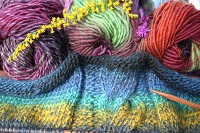
Demand for Indian yarn in China has been growing substantially from last October. However, there continues to be pressure on prices. “In short-term, we expect the market to consolidate with an increase in business between suppliers of consistent quality and direct manufacturers in China. In long term, we are sure importers will increase their sourcing from India owing to better business culture adopted by leading Indian suppliers,” believes N Ravindranathan, Joint Director, Texprocil.
Strategies to survive and succeed
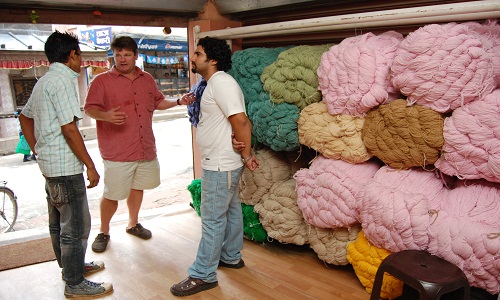
Global yarn production is on the rise over the past three years, owing to various regional agreements and rules of origin restriction. However, in the present scenario of doubtful TPP and other regional agreements, it will be survival of the fittest in the entire textile sector in general and spinning sector in particular.
He explains, “Yarn import into China has declined only marginally over the last year compared to previous two years. Big change is India and Pakistan are losing market share to Vietnam in supplying to China due to tariff advantage, investment by Chinese companies in Vietnam. Apart from Bangladesh, some African and South American countries are emerging as major consumers of Indian yarn. India is already a top supplier of yarn to more than 25 countries in the world.”
He says, increase in import volumes from Vietnam and Indonesia owing to tariff advantage is not a major concern. Quality conscious yarn importers in China are keen to source more and more yarn from India. “If you see month on month import into China, it can be observed that there is a declining trend in import from Vietnam and market share of India is gradually increasing,” he avers.
Expectations from Yarn Expo
Indian exporters of yarn are continuously exploring marketing opportunities in textile conversion centres around the globe to overcome fluctuations in raw material prices and related disruption in export to China. China being the single largest importer of yarn, any fluctuation in import volumes in to China affects the entire value chain around the world. “We need to have a very reliable market research to monitor demand supply situation on real time basis,” he says.
“We, at Texprocil, facilitate expertise in international marketing for the advantage of Indian manufacturers and exporters. We undertake various studies to enhance the competitive strength of Indian manufacturers and primary market research in unexplored markets so as to balance loss of business in some countries,” points out N Ravindranathan.
Indian exhibitors are looking forward to meet Chinese customers at the Fair to get a feel of present market condition and business prospect over the next six months’ period. There are no expectations of spot booking at the Fair. It’s more a meeting point with international buyers.
"Joint show from FashionTime Designers opened the fourth day of the Fashion Week. Brand La Trevi chose flying cranes as the key theme of the collection - the birds scattered on the blue suit, on lapels of the outwear and dresses. The collection also featured cashmere coat in peach-color, scarlet suit and dark-blue A-silhouette dress with flared sleeves. The collection from the designer Olya Gerasimenko was sustained in delicate peach and powder shades. Sunrise color employed for the dress translates the delight and reveals femininity just like the tender light-green sundress on thin straps or cropped top with a basque. "
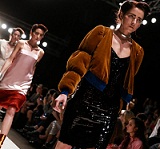
Joint show from FashionTime Designers opened the fourth day of the Fashion Week. Brand La Trevi chose flying cranes as the key theme of the collection - the birds scattered on the blue suit, on lapels of the outwear and dresses. The collection also featured cashmere coat in peach-color, scarlet suit and dark-blue A-silhouette dress with flared sleeves. The collection from the designer Olya Gerasimenko was sustained in delicate peach and powder shades. Sunrise color employed for the dress translates the delight and reveals femininity just like the tender light-green sundress on thin straps or cropped top with a basque. Family line was demonstrated by the brand Family Hope. The collection featured ethnic patterns hence golden embroideries and velvet fabrics. The combination of denim with scarlet lining and adornment in the shape of glittering scarlet crystals looked fresh and intriguing. Brand Alisia Fiori presented the collection for the little ones. It seemed that dresses for girls were inspired by the Victorian style - wristbands, shirtfronts, white frills and reserved collars, all referred to the best fashion traditions for the daughters of noble houses.
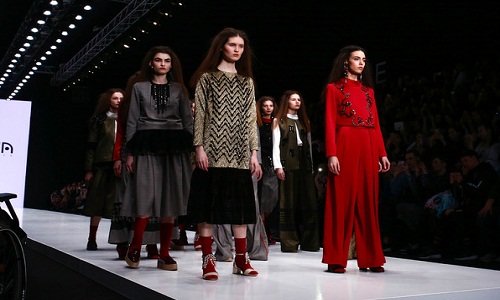
Graphic features were the signature of the evening gowns from BORODULIN`S brand. Designers Alexey and Anna Borodulina decided to cut off the spares, leave only a couple of dominant colors and make a stake on exclusive carved patterns. Ornaments, stately as the quirks of iron lattice, turn a female into an unapproachable and magnificent fortress. Classic mixture of black, red and white does not disturb from a variety of cuts and adornments. Perforation and lace, reserved jump-suits, unbelievably beautiful wraps and capes is hardly the complete list of all the discoveries in the fall-winter collection of the brand.
Designer NIKOLAY LEGENDA for the first time in history of the brand presented the male collection ISSUE 8 BEAUTIFULBOYS. Among others, the clothing line included coats, shirts with a waistband reminding of robes, kimonos, metal-coated bombers and light puff jackets in fluorescent colors. Despite the monochrome and reserved characteristics of the collection there were some bright accents - jackets with branded jacquard logotypes, fur sweatshirts and animal prints.
Collection from the brand Design Studio by Oksana Fedorova was distinguished by minimalism, monochrome color palette and straight lines that were underlined by the stripe being collection's principal print. Business-lady style could be traced in the flared pants with creases, cashmere pullovers and basic cotton shirts. Distinct silhouettes are built by the wide belts with massive buckles on the waist and baggy fine-cut sleeves.
PORTNOY BESO brand displayed extremely trendy collection. He tried to reveal the female's dark side, the side of the goddess-temptress. Bombers worn on a naked body, leggings glittering with silver, bustier dresses embroidered with beads preformed in bright colors, flared and keeping shape. Sequined mini-dresses came alongside with maxi looks that featured deep cuts unclothing the perfect legs of the models. Among the more romantic looks there were, for instance, silk and slim nightgown dresses.

Multiple layers and mixtures of the fabrics were employed by the brand AKA NANITA that combined embroidery by bugle beads, cellular lace, languid velvet and brocade. Skirts were worn atop the culottes while trouser suits performed in the color of melted ice-cream demonstrated brave side splits. Free waistline was sometimes on the waist like in the loose silk pants, sometimes it shifted to the hips - like in dresses and coats. Cranberry red, golden, black and silvery grey dominated on the catwalk.
Fashion show from designer Yury Pitenin and his St Petersburg brand Saint-Tokyo was some sort of experiment of texture and shape. Color gradation could be clearly traced in the clothing line: from black and white monochrome to green, olive green, terracotta, bright red and wine red. Designer placed a stake on details and asymmetric lines. The runway featured multi-layered dresses, baggy puff jackets, clamdiggers with pockets hinting at the sport chic, sequined flowing pants along with the geometric silhouettes, lace skirts and glossy fabrics.
Conceptual clothing from Lumiér Garson is all about the material expressions. In previous collections designer Jean Rudoff pondered about fashion and its tiring effect, about the impossibility to return to childhood, about the memories slipping away. Fall-winter collection embraces many different themes. It tells about the fashion labels that erase individuality. It is about anxiety and reality that is sensed as the Post-Apocalypse world. It is the history about surviving people and traces of furnace oil on the raincoat or paint on the shirt. It is about the girls in dresses that are half pink with ruffles and half straight and black. Around, there is an airless space, the purity is impossible, the innocence is lost. The best way out is deprivation and asceticism, the best way out is to get ready for the battle. Wear a mask, khaki jacket, take a tactic backpack and never forget who you are.
Rebellious spirit of an ambitious girl in the big city was caught by Keti Topuria and her brand KETIone. Oversize parkas and asymmetric sweatshirts with the neckline opening one shoulder highlighted the street style and supported sport crop-tops, bodies and hoodies. Usable garments were performed in the optimistic spring color palette - khaki, beige and bordo.
The presentation corner featured the project #ТОЛСТОВКАМЕЧТЫ (DREAMHOODY). The project offered visitors to design a comfortable and trendy individual hoody. One could choose the color, model, signs and prints. The most complicated part is to determine the design whereas to get a dream hoody is as simple as that, at least authors of the project think so.

